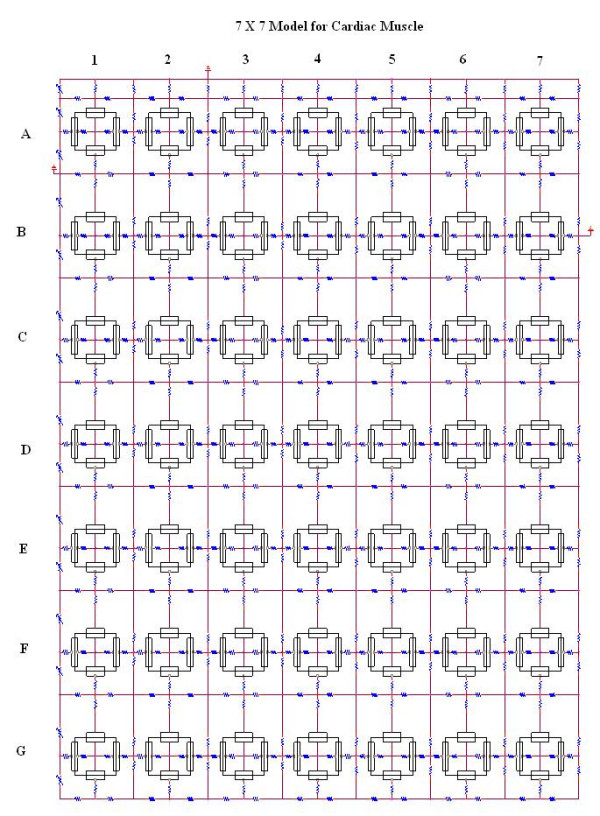Figure 1.

7 × 7 Model for Cardiac Muscle: Block diagram of the 7 × 7 model for cardiac muscle. These were 7 parallel chains (A-G) of 7 cells each (1–7). The cells longitudinally were separated by high-resistance cell junctions, with a radial junctional cleft resistance (Rjc) of 25 MΩ (50 MΩ/2). The parallel chains were separate and also not connected by gap-junction channels. The longitudinal resistance of the interstitial space between the parallel chains (Rol2) had values of 200 KΩ and 500 KΩ. Both ends (termination) of the tissue bundles were connected by transverse resistances (RBT); the value was 1.0 KΩ, but much higher values were tested. There was only little effect of varying RBT over a wide range, until very high values of 500 MΩ were inserted. As shown, there were 4 basic units for each cell: two for the surface membrane (one facing upwards and one downwards) and one for each of the two junctional membranes. The resistive and capacitive elements of the surface membrane and junctional membranes were prorated based on the relative areas. Electrical stimulation (rectangular current pulse of 0.5 nA and 0.5 ms) was applied intracellularly, either to the entire chain (A or G) or to the first cell only of these chains (cell A1 or cell G1).
